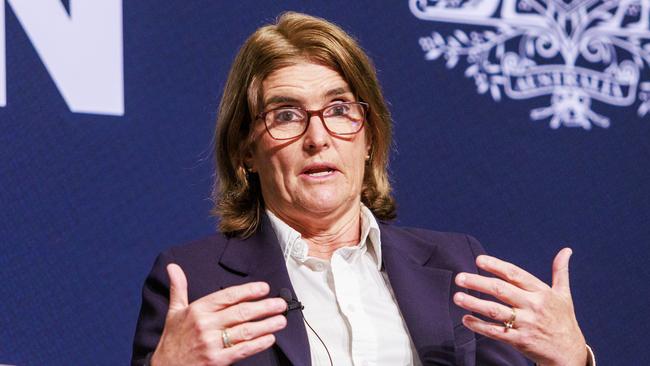
The ABS now tells us that It was barely half that, at just 0.6 per cent. That’s an annual rate of 2.4 per cent – smack in the middle of the RBA’s 2-3 per cent target range.
Now, obviously, you can’t take one quarter’s numbers as telling us that ‘inflation’s over’.
But even putting that together with the higher 1.2 per cent inflation number of the September quarter gives annualised inflation of just 3.6 per cent for the December half-year.
This – annualising the latest two quarters – is the best guide to today’s inflation reality. There’s ‘too much inflation history’ in the, even though still encouragingly low, 4.1 per cent number over the full 2023 year.
That’s, importantly, 4.1 per cent for headline inflation and just 4.2 per cent for the underlying inflation that the RBA focuses on.
In November, the RBA predicted both would be 4.5 per cent for the year. That expectation was the basis of the decision to hike for the first month since June, and therefore also the first hike under new governor Michele Bullock.
All this confirms what I wrote back in November; that the hike was certainly unnecessary, and, as I added then, arguably a mistake.
Now I would argue, there’s no question about it: it was a mistake.
That’s, given not just inflation falling significantly faster than the RBA expected, but the clear evidence from the retail sales data that consumer spending has been cratering.
Put that hardly surprising consumer pain together with what’s happening in housing and construction and the overall economy could be running smack into a brick wall.
To repeat, the RBA really should be reversing that hike at its meeting next week. It was the ‘rate hike too far’.
It is now clear the 4.1 per cent cash rate reached last June was doing its job of bringing inflation down.
And it was doing so along the “narrow path” that Bullock’s predecessor Philip Lowe – and indeed also Bullock, both as his deputy and now as governor - wanted to stay on.
That was getting inflation back below 3 per cent; but doing so without sending the economy over the cliff and unemployment rocketing.
We are now likely to see good news/ bad news data coming thick and fast over the next two months. Good news on inflation, bad news on the economy and jobs.
Assuming we don’t get a rate cut next week, I would suggest one in March would be a racing – very necessary - certainty, providing a little more face-saving distance to the Cup Day hike.
But, critically, will the two options put before the board for discussion - a process initiated by Lowe and continued by Bullock – be between leaving the rate unchanged and cutting?
In every meeting to date, since the policy was adopted by Lowe a year ago, the board has been asked to discuss and debate between a hike and leaving the rate unchanged.







Oh dear. The Reserve Bank hiked on Melbourne Cup Day in November thinking inflation for the December quarter was going to be 1.1 per cent.